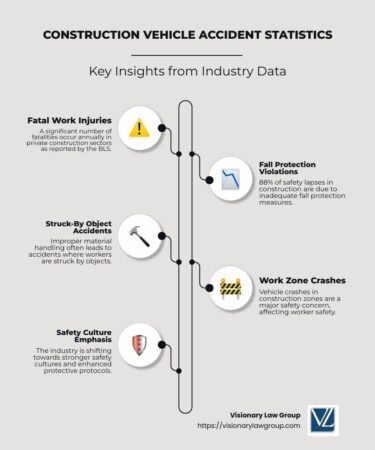
Auto vs. pedestrian accidents represent a serious public safety issue worldwide. When a motor vehicle collides with a pedestrian, the consequences are often severe or even fatal because pedestrians lack the physical protection vehicles provide. Understanding the causes, consequences, and legal aspects of these accidents is essential for both drivers and pedestrians to promote safety and ensure justice when accidents occur.
What Are Auto vs. Pedestrian Accidents?
An auto vs. pedestrian accident occurs when a motor vehicle—such as a car, truck, or motorcycle—hits a person on foot. These incidents can happen in various settings: city streets, suburban areas, parking lots, or rural roads. The common factor is that a moving vehicle strikes a pedestrian who is walking, standing, or crossing the road.
Causes of Auto vs. Pedestrian Accidents
Many factors can contribute to auto vs. pedestrian accidents, often involving driver negligence, pedestrian actions, or environmental conditions. The most common causes include:
1. Driver Distraction and Inattention
Distracted driving—such as texting, talking on the phone, eating, or adjusting controls—is a leading cause. Drivers who take their eyes off the road may fail to notice pedestrians crossing or walking alongside the roadway.
2. Speeding
Speeding reduces a driver’s reaction time and increases the force of impact, often resulting in more serious injuries or fatalities.
3. Failure to Yield the Right of Way
Drivers sometimes neglect to yield to pedestrians at crosswalks or intersections, violating traffic laws and putting pedestrians at risk.
4. Driving Under the Influence
Alcohol and drug-impaired driving severely impair judgment and reaction time, making accidents more likely.
5. Poor Visibility and Weather Conditions
Nighttime, fog, rain, and other adverse weather conditions reduce visibility and can increase the risk of accidents.
6. Pedestrian Behavior
While drivers bear much responsibility, pedestrian actions such as jaywalking, crossing against signals, or being distracted by phones can also contribute.
Injuries from Auto vs. Pedestrian Accidents
Due to the lack of protection, pedestrians often suffer devastating injuries, including:
Traumatic brain injuries (TBI) and concussions
Broken bones and fractures
Internal organ damage
Spinal cord injuries, potentially resulting in paralysis
Cuts, bruises, and soft tissue injuries
Psychological effects such as PTSD and anxiety
The severity of injuries depends on vehicle speed, angle of impact, and the pedestrian’s physical condition.
Immediate Steps After an Auto vs. Pedestrian Accident
If you are involved in an auto vs. pedestrian accident, it is crucial to take the following actions:
1. Seek Medical Attention
Even if you feel fine, get checked by a medical professional immediately since some injuries might not be apparent.
2. Call 911 and Report the Accident
An official police report is critical for insurance and legal purposes.
3. Gather Evidence
If you can, take photos of the scene, your injuries, and any vehicle damage. Also, collect contact information from witnesses.
4. Avoid Admitting Fault
Do not apologize or admit responsibility at the scene as this can be used against you later.
5. Contact a Lawyer
A qualified auto vs. pedestrian accident attorney can guide you through the legal process and protect your rights.
Legal Considerations in Auto vs. Pedestrian Accidents
Liability and Fault
Determining fault in auto vs. pedestrian cases can be complex. While drivers have a duty to watch for pedestrians, pedestrian negligence may also be a factor. Comparative negligence laws in many states allow damages to be reduced based on the injured party’s degree of fault.
Compensation Available
Injured pedestrians can seek compensation for:
Medical expenses (past and future)
Lost wages and reduced earning capacity
Pain and suffering
Emotional distress
Permanent disability or disfigurement
Wrongful death claims for surviving family members
Statute of Limitations
Most states impose a time limit, often one to three years, to file a personal injury claim after an accident. Acting quickly is essential to preserve your rights.
Preventing Auto vs. Pedestrian Accidents
For Drivers:
Always remain vigilant, especially in residential areas and school zones
Obey speed limits and traffic signals
Avoid distractions such as mobile devices
Never drive under the influence of alcohol or drugs
Use headlights properly to improve visibility
For Pedestrians:
Use designated crosswalks and obey pedestrian signals
Stay alert and avoid distractions such as headphones or phones
Wear bright or reflective clothing, especially at night
Make eye contact with drivers before crossing
The Role of Urban Design and Policy
City planners and lawmakers play a critical role in pedestrian safety by:
Installing well-marked crosswalks and pedestrian signals
Improving street lighting and visibility
Implementing traffic calming measures like speed bumps and curb extensions
Creating pedestrian-only zones and wider sidewalks
These efforts help reduce accidents and protect vulnerable road users.
Conclusion
Auto vs. pedestrian accidents are often tragic and life-altering. Both drivers and pedestrians share responsibility in preventing these accidents. When they do occur, knowing your rights and legal options is crucial for recovering compensation and justice. If you or a loved one has been involved in an auto vs. pedestrian accident, seeking experienced legal counsel is a vital step to protect your interests and navigate the complex claims process.
